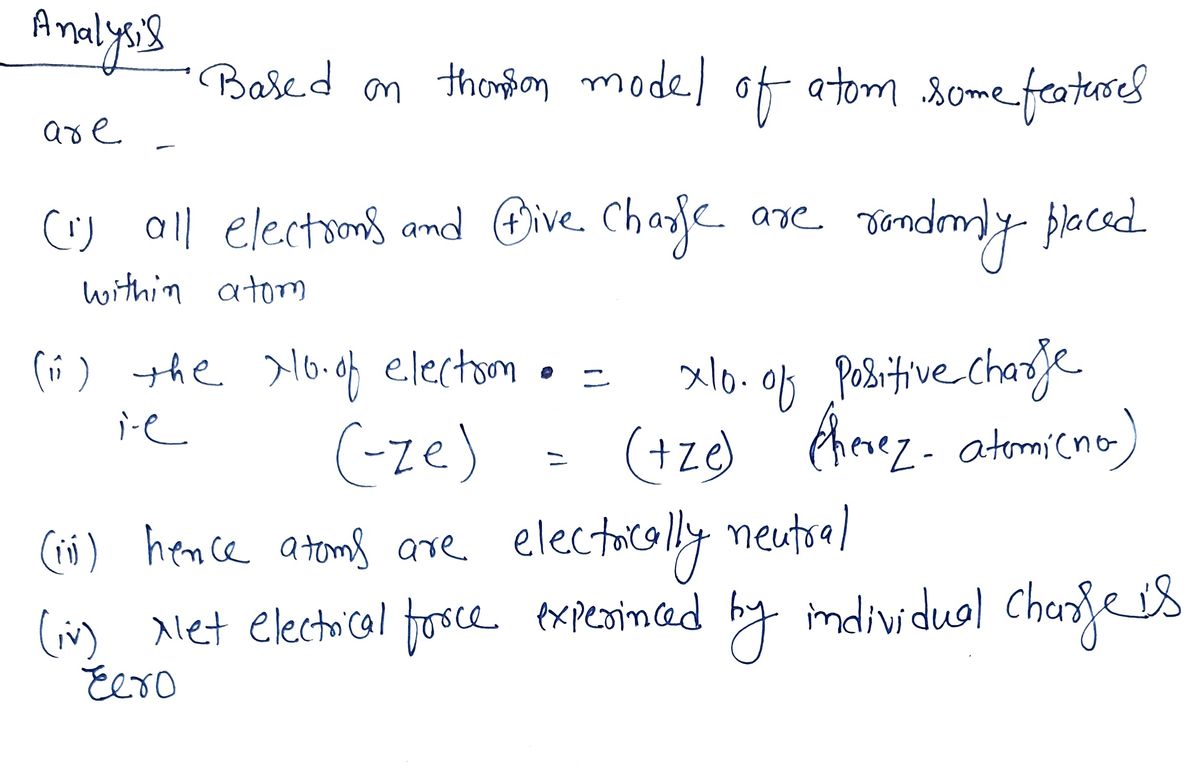One model of the atom from the early 20th century is the Thomson model, in which a spherical positive charge, which we'll assume is uniform, contains a number of electrons. Let's further assume that, on average, the electrons are also uniformly distributed throughout the sphere. A) Consider one of the electrons. Excluding that electron, what is the net charge of the rest of the atom? B) If the atomic sphere has radius R, what is the force acting on that electron a distance r
One model of the atom from the early 20th century is the Thomson model, in which a spherical positive charge, which we'll assume is uniform, contains a number of electrons. Let's further assume that, on average, the electrons are also uniformly distributed throughout the sphere. A) Consider one of the electrons. Excluding that electron, what is the net charge of the rest of the atom? B) If the atomic sphere has radius R, what is the force acting on that electron a distance r
Related questions
Question

Transcribed Image Text:One model of the atom from the early 20th century is the Thomson model, in which a spherical
positive charge, which we'll assume is uniform, contains a number of electrons. Let's further
assume that, on average, the electrons are also uniformly distributed throughout the sphere.
A) Consider one of the electrons. Excluding that electron, what is the net charge of the rest
of the atom?
B) If the atomic sphere has radius R, what is the force acting on that electron a distance r<R
from the center?
c) What type of motion would this electron therefor perform?
R.
Expert Solution
Step 1

Trending now
This is a popular solution!
Step by step
Solved in 2 steps with 2 images
